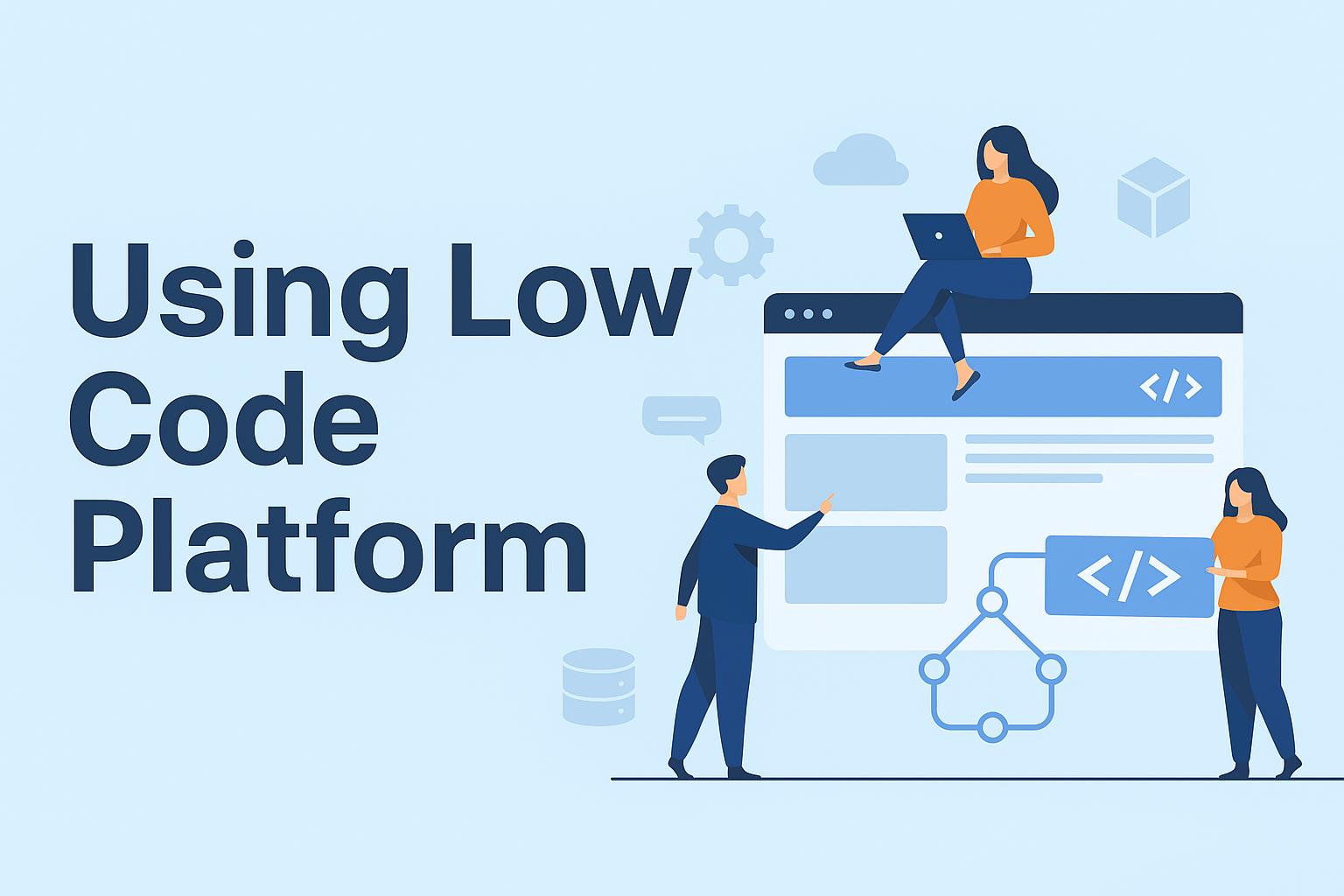Companies need to come up with fresh ideas rapidly and save money without sacrificing the quality of their job. There is a lot of stress in the fast-paced digital world we live in and where low-code platform technology comes in. This new way of making software will change everything.
People who know a lot about technology and people who don’t can work together on low-code platforms to come up with important ideas. Businesses may easily and quickly construct apps without having to write any code by hand. People from different backgrounds can also utilise these platforms to work together and come up with new ideas. This allows people new ways to run their businesses.
What does it mean to have a platform that doesn’t need a lot of code?
A low-code platform is a visual development environment that makes it easier for anyone to make, build, and share programs without having to write a lot of code. It does this by using parts that are already built and interfaces that you can move around. These platforms help companies develop apps faster because they are easier, faster, and more adaptable. These tools let people with different levels of tech knowledge talk to each other. This works well for both the business and the people working on the project.
Why is it more important than ever to use platforms that don’t need coding?
We truly need rapid fixes that work on the internet. Researchers believe that by 2025, 70% of all new apps will use technologies that don’t require a lot of programming or even any coding at all. The rationale is:
• Shorter development cycles: Low-code platforms can make development up to 10 times faster than other ways. This makes it easy for businesses to add new products and features.
• Lower Costs: Businesses can save a lot of money on development and maintenance because they don’t have to hire a lot of developers or write their own code.
• Helping Citizen Developers: IT companies can do a lot of good by letting people who aren’t tech-savvy make and change software. This offers developers more time to work on tougher problems. One can adjust and add to low-code platforms, so you can always adapt, update, and grow programs to match the needs of the business.
• Better teamwork: The IT and business teams work well together, which makes everyone feel like they are all working towards the same goals.
Many low-code platforms also come with tools for monitoring and analytics that help businesses figure out how many people are using their apps and how well they are operating. Businesses can keep making their products and services better since they can see how well they’re doing.
It’s also simple to test out new ideas on these platforms because it’s simple to make changes. Businesses can try out new ideas without having to spend a lot of money right once. This technique of developing things that can alter helps create a culture of always growing better and being able to adapt to a market that is continuously changing.
What Makes Low Code Platforms Even Better
• Visual development tools: Builders that let you drag and drop make it easier to see how things will work and how others will use them.
• Ready-made parts and templates: Use modules and templates that can be used for basic business functions over and over again to speed up development.
• Works with a lot of other software: It’s easy to connect to databases, cloud services, APIs, and other software ecosystems that are already in use.
• Multi-Channel Deployment: Make something once and use it on a lot of various platforms, such the web and mobile devices. If you employ low-code platforms, your business will expand faster in 2025.
Low-code platforms can help many different kinds of businesses
• Healthcare: Make telehealth apps and systems so you can check on patients fast and cheaply.
• Finance: Make sure your risk reporting and management systems are secure and can adapt to changes in the law.
• Retail: Set up systems to keep track of your stock, buy products online, and employ mobile point-of-sale apps as soon as you can.
Some of the most popular low-code systems are Microsoft Power Platform (often called Power Apps), Mendix, and OutSystems. Interestingly, There will be a lot of jobs for those who know how to use low-code platforms in the future.
Fewer workers are coding by hand because low-code platforms help businesses remain ahead of the market and come up with new ideas quickly. These tools can help businesses save money, give their employees more power, and quickly alter to meet people’s needs. A low-code platform can help your business go digital in 2025 and beyond, no matter how big or small it is.








